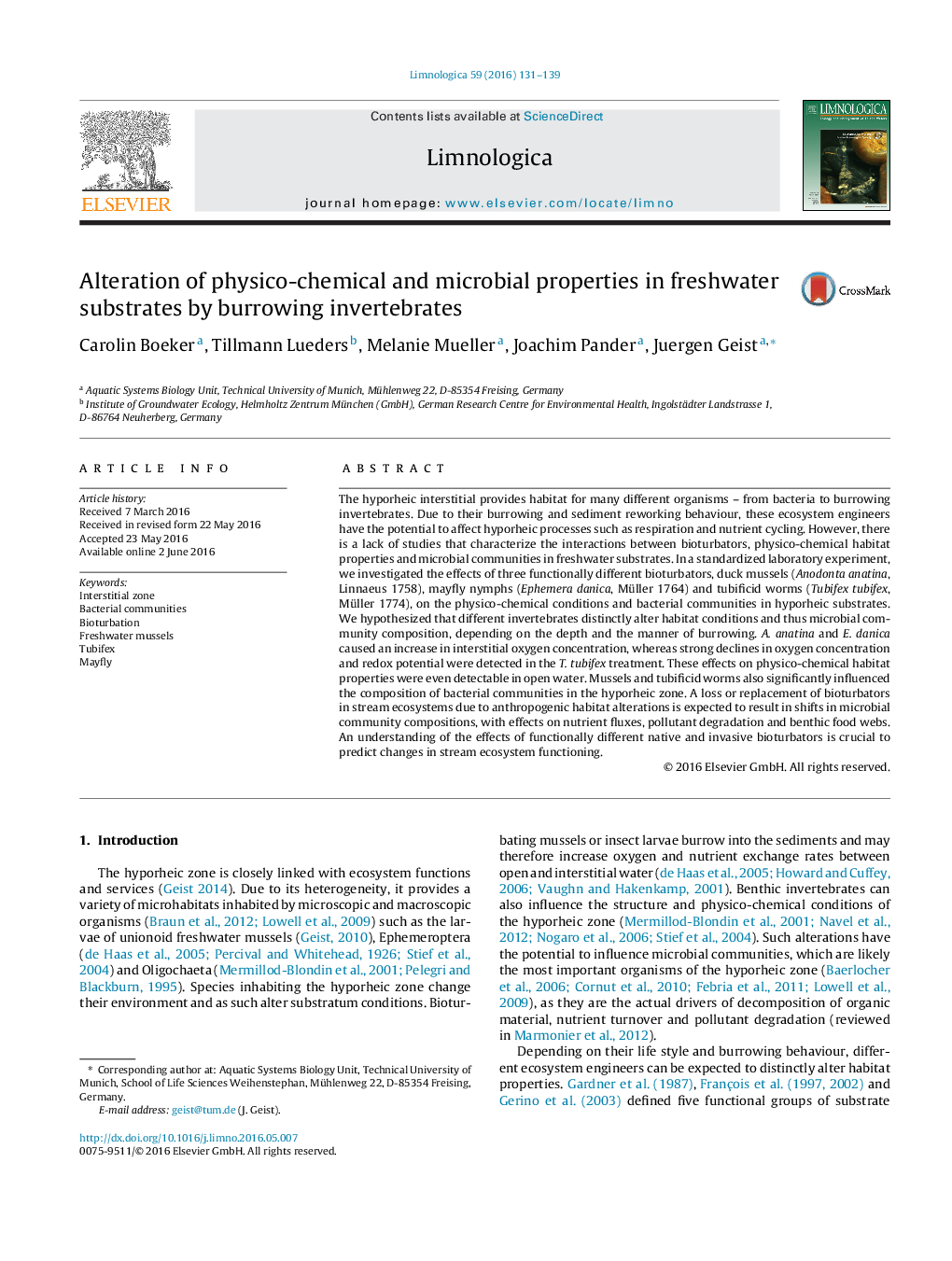| Article ID | Journal | Published Year | Pages | File Type |
|---|---|---|---|---|
| 6305525 | Limnologica - Ecology and Management of Inland Waters | 2016 | 9 Pages |
Abstract
The hyporheic interstitial provides habitat for many different organisms - from bacteria to burrowing invertebrates. Due to their burrowing and sediment reworking behaviour, these ecosystem engineers have the potential to affect hyporheic processes such as respiration and nutrient cycling. However, there is a lack of studies that characterize the interactions between bioturbators, physico-chemical habitat properties and microbial communities in freshwater substrates. In a standardized laboratory experiment, we investigated the effects of three functionally different bioturbators, duck mussels (Anodonta anatina, Linnaeus 1758), mayfly nymphs (Ephemera danica, Müller 1764) and tubificid worms (Tubifex tubifex, Müller 1774), on the physico-chemical conditions and bacterial communities in hyporheic substrates. We hypothesized that different invertebrates distinctly alter habitat conditions and thus microbial community composition, depending on the depth and the manner of burrowing. A. anatina and E. danica caused an increase in interstitial oxygen concentration, whereas strong declines in oxygen concentration and redox potential were detected in the T. tubifex treatment. These effects on physico-chemical habitat properties were even detectable in open water. Mussels and tubificid worms also significantly influenced the composition of bacterial communities in the hyporheic zone. A loss or replacement of bioturbators in stream ecosystems due to anthropogenic habitat alterations is expected to result in shifts in microbial community compositions, with effects on nutrient fluxes, pollutant degradation and benthic food webs. An understanding of the effects of functionally different native and invasive bioturbators is crucial to predict changes in stream ecosystem functioning.
Related Topics
Life Sciences
Agricultural and Biological Sciences
Aquatic Science
Authors
Carolin Boeker, Tillmann Lueders, Melanie Mueller, Joachim Pander, Juergen Geist,
